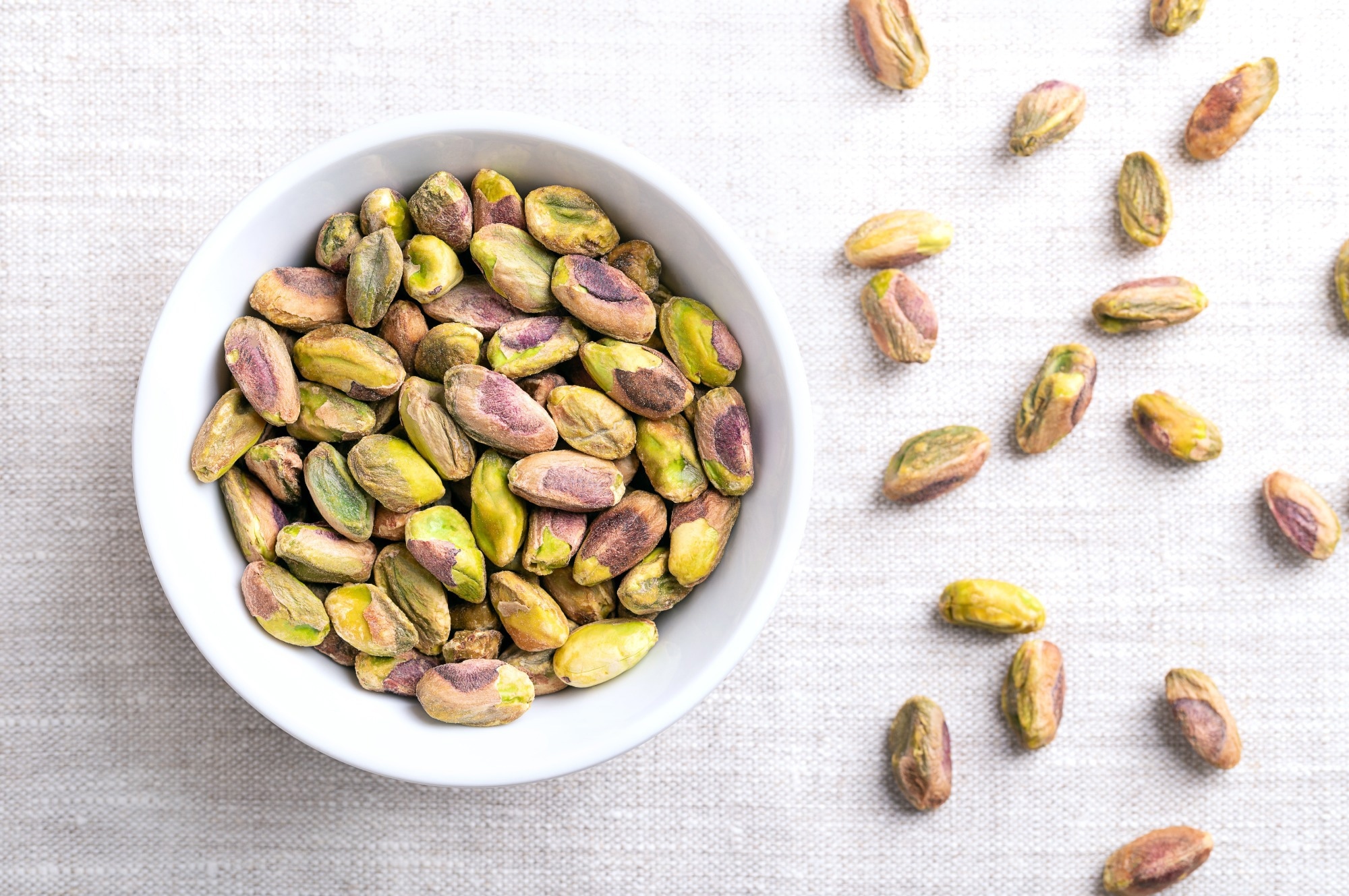Dietary intervention with pistachios is effective in increasing macular pigment optical density (MPOD) in healthy adults, study finds.
Study: Pistachio consumption increases Macular Pigment Optical Density in healthy adults: a randomized controlled trial. Image Credit: Peter Hermes Furian/Shutterstock.com
A recent Journal of Nutrition study conducted a randomized controlled trial to evaluate the effect of a pistachio dietary intervention on macular pigment optical density among healthy adults.
Background
Lutein and zeaxanthin (L/Z) are dietary xanthophylls that cross the blood-brain barrier and exclusively accumulate in the human retina’s macular region. In this region, these xanthophylls are referred to as macular pigment (MP), and they offer protection from light damage as blue light filters and antioxidants.
Higher levels of MP protect against vision loss due to age-related macular degeneration (AMD) and augment visual function. Research has shown that consumption of L/Z raises MP levels, which the MPOD can measure.
L/Z’s bioavailability depends on the food source, as they are lipid-soluble phytonutrients. For example, L/Z in egg yolk is three times more bioavailable than L/Z in spinach or a dietary supplement.
Pistachios contain high amounts of either L or Z and provide a source of fat, mainly mono- and polyunsaturated fats. This potentially makes pistachios a highly bioavailable source of lutein. It is interesting to quantify the improvement in MPOD following a pistachio dietary intervention.
About the study
This study conducted a single-blinded randomized-controlled trial among healthy adults to assess the effect of a daily intake of 2 oz of pistachios on MPOD. The intervention lasted 12 weeks, and the results were compared with those of a usual diet (UD) group.
Across the UD and pistachio intervention (PIS) groups, the MPOD and serum L/Z in middle-aged to older healthy adults were compared.
The sample size comprised 36 individuals with habitually low L/Z intake and low baseline MPOD. The exclusion criteria included conditions such as liver, kidney, or pancreatic disease, hyperlipidemia, bleeding disorders, diverticulitis, and others.
The average subject age at baseline was 59.5 years, and 58% were female. The percentage of Asian, Black, and White participants was 14%, 8%, and 78%, respectively. The mean body mass index (BMI) was 25.6, and the average daily L/Z intake was 1.1 mg/day.
Heterochromatic flicker photometry was utilized to measure MPOD at four retinal eccentricities, i.e., 0.25°, 0.50°, 1.00°, and 1.75°, with higher eccentricities reflecting measures in the periphery and lower eccentricities reflecting more central macula MPOD measurements.
The measurements were taken during baseline, week-6, and week-12 study visits. High-performance liquid chromatography (HPLC) was used to analyze serum L/Z.
Study findings
At baseline, no significant differences in macular pigment optical density (MPOD) were found between the pistachio intervention (PIS) and usual diet (UD) groups at any eccentricity. After 6 weeks, the PIS group showed a notable increase in MPOD relative to baseline, which was sustained at the 12-week mark. However, no additional increase was observed between 6 and 12 weeks. The UD group showed no change in MPOD throughout the 12-week study.
Serum lutein concentration changes followed the same pattern as MPOD. In the PIS group, serum lutein concentrations rose from baseline to 12 weeks while remaining stable in the UD group. Zeaxanthin and cis-lutein levels did not change in either group. Additionally, at all four eccentricities, changes in serum lutein concentration were associated with changes in MPOD.
Several limitations should be considered when interpreting these findings. First, this was a single-blinded study without a true placebo group, dictated by the nature of the intervention, although serum analysis and dietary data indicated participants followed the study instructions. Second, no blood lipid profile was conducted, though this may be relevant given the role of lipoproteins in carotenoid transport. Third, the pistachio dosage was higher than the amount recommended in the qualified health claim for tree nuts, suggesting that future studies should explore the efficacy of a lower dose.
Lastly, the study’s generalizability may be limited, as participants began with low baseline MPOD and dietary lutein/zeaxanthin intake. It remains unclear if the effects of the pistachio intervention would be comparable in other populations.
Conclusions
In sum, this study showed that a dietary intervention with pistachios is effective in increasing MPOD. This finding is relevant given the consumption of tree nuts is low in the United States, relative to the FDA-qualified health claim.
In the future, research should explore the dose-response as well as efficacy in other diverse populations.
Source link : News-Medica

